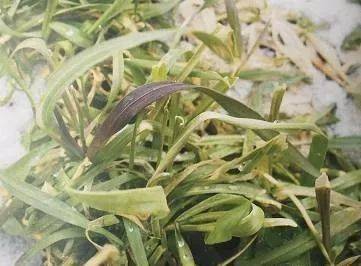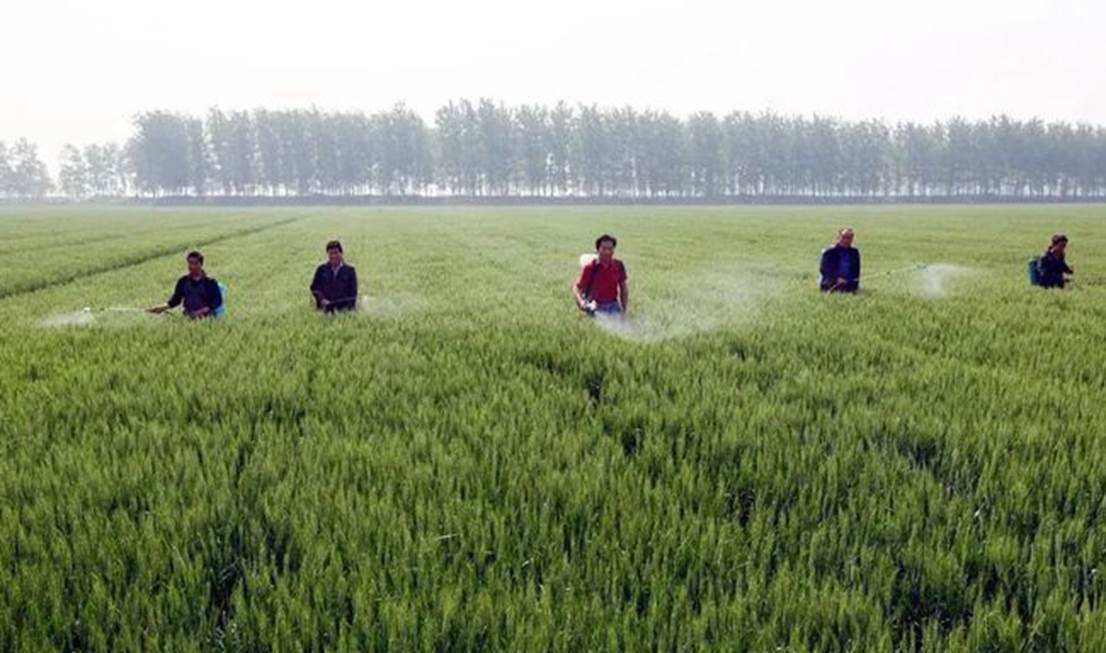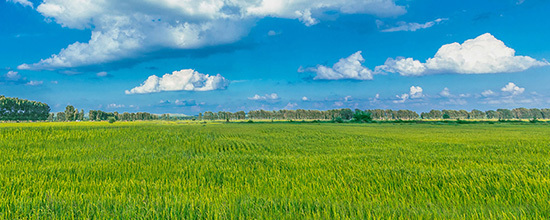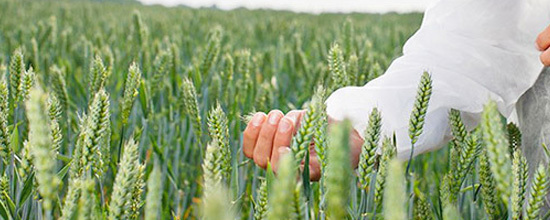PRODUCTS
Wheat fertilizer management
Wheat fertilizer management
Wheat, any of several species of cereal grasses of the genus Triticum (family Poaceae) and their edible grains. Wheat is one of the most widely distributed crops in the world, and it is also one of the most important food crops. More than one-third of the world's population takes wheat as its main food. The world's major planting countries mainly include China, the United States, India, Russia, France, Canada and Argentina, which account for about 60% of the world's wheat planting.

Due to the wide differences in natural conditions in various regions, the sowing date and maturity of wheat are also very different. According to different requirements for temperature, it can be divided into two types: winter wheat and spring wheat. Taking China as an example, winter wheat is mainly planted, which is distributed in the east of the Liaohe River, northern China, southern Xinjiang, Shaanxi, the Yangtze River Basin and southern China. Winter wheat in the south of Yangtze River is decreasing year by year due to its low yield and poor quality, and the same is true for spring wheat in the north of the Yangtze River.
1. Characteristics of nutrient requirements
The nitrogen, phosphorus, potassium, calcium, magnesium, sulfur and trace elements necessary for wheat growth are mainly absorbed from the soil by the root system. Among them, the contents of nitrogen, phosphorus and potassium in wheat are relatively high, and the demand is relatively large, which plays an extremely important role in the growth and development of wheat. When nitrogen is deficient, wheat seedlings are thin, leaves are light, plants are short, tillers are few, roots are poorly developed, ears are small and few, early maturity early and low yield. Wheat is sensitive to phosphorus, and early phosphorus is extremely important for the growth of plants and roots. Adequate phosphorus can significantly increase the number of tillers and secondary roots, and improve the cold resistance at seedling stage. When phosphorus is deficient, the growth is slow, and the plants are thin, without tillering or less tillering; The leaf color is dark green, the stem base and leaf sheath are purple, the root system development is inhibited, and it becomes "chicken claw", with delayed heading and flowering, low 1000-grain weight and poor quality; Potassium-deficient wheat grows slowly, with slender leaves, yellow-green, thin stems and horizontal tillers; The jointing and booting stage is the peak period for wheat to absorb potassium. Applying potassium fertilizer can not only increase wheat yield, but also promote plant health, more ears, full grains, reduce lodging and enhance disease resistance.

Nitrogen deficiency

Phosphorus deficiency

Nitrogen deficiency
Although wheat needs medium and trace elements such as calcium, magnesium, sulfur, boron, zinc, copper, manganese and molybdenum, these elements also play an important role in the growth and development of wheat. For example, manganese has a great influence on the growth of leaves and stems of wheat; Boron affects the flowering, pollination and fruiting of plants, while serious boron deficiency leads to crops only flowering but not bearing fruit. When the nutrient supply in the soil supply is insufficient, the effect of applying the corresponding medium and trace element fertilizers is obvious. For example, applying sulfur fertilizer to sulfur-deficient soil can improve the quality of flour, applying boron fertilizer to boron-deficient soil can make crops blossom and bear fruit normally.
The critical periods of different nutrients in wheat appear in different periods. The critical periods of nitrogen are tillering stage before winter and young spike differentiation stage. If the supply of nitrogen is insufficient in these two periods, tillering and grain number per spike will be reduced, resulting in yield reduction. The critical period of phosphorus is in the three-leaf stage of wheat; The critical period of potassium is at jointing stage. The occurrence time of the maximum efficiency period of each nutrient element is also different. The maximum efficiency period of nitrogen is from jointing stage to booting stage, that of phosphorus is from heading stage to flowering stage, and that of potassium is during pregnancy. Therefore, the demand and absorption ratio of nitrogen, phosphorus and potassium are different in different growth stages of wheat. Generally, there are two peak periods of nitrogen absorption, one is tillering stage before winter. At this time, although the plant is small, the absorbed nitrogen accounts for about 13% of the total absorption, which is a period of rapid population development; The second is jointing and booting stage, during which the amount of fertilizer needed increases rapidly due to rapid growth, and the amount of nitrogen absorbed accounts for about 37% of the total amount absorbed, which is the period with the largest amount of nitrogen absorbed. Generally, the absorption of phosphorus and potassium increases gradually with the growth period, and increases sharply after jointing, with the maximum absorption from booting to maturity. More than 40% of phosphorus and potassium nutrients are absorbed after booting. Therefore, in the critical period of nutrient supply, if the nutrient supply is sufficient, it can ensure that wheat ears are large, grain weight and high yield. Wheat is more sensitive to manganese and copper, and proper application is beneficial to yield increase; Although wheat is insensitive to zinc and molybdenum, due to the long-term use of phosphate fertilizer, it is easy to induce zinc and molybdenum deficiency symptoms.
| Growth period | Description of Wheat Growth Status Node |
| (Sowing period) In mid-October | |
| (Emergence period) Late October to mid-November | When the first true leaf of more than 50% wheat is 2-3 cm above the ground. |
| (Tillering stage) Late November to early December | When the first tiller of 50% plants in the whole field extends out of the leaf sheath by 1.5~2cm. |
| (Overwintering period) Mid-December to early February | When the daily average temperature drops to about 2℃, the wheat stops growing. |
| (Regreening) Mid-February to early March | When the newly grown leaves of 50% plants extend out of the leaf sheath by 1~2cm and the leaves change from dark green to bright green. |
| (Jointing stage) Mid-March to early April | When the first internode of the stem of more than 50% plants is 1.5-2cm above the ground. |
| (Heading period) Mid to late April | When the wheat ear is exposed from the flag leaf sheath to half of the ear length. |
| (Grouting) May | The grain shape has been basically formed. |
| (Milky ripe) early to mid-June | Waxen maturity-full maturity |
Growth and development schedule of wheat grown in Shandong, China
Compared with other crops, wheat has three remarkable characteristics in nutrient demand: First, wheat is highly dependent on soil fertility; Second, the amount of nitrogen should not be too large, otherwise it will easily lead to excessive growth in the early stage and yield reduction in the late stage; Third, wheat is particularly sensitive to phosphorus. According to the experiment, when the yield per mu is 300kg, every 100kg of wheat needs to absorb nitrogen (N) 3.0~3.5kg, phosphorus (P2O5) 1.0~1.5kg, potassium (K2O) 2.0~4.0kg, the ratio of the three is about 3:1: 3. When 500kg wheat is produced per mu, it will absorb about 18 ~ 20 kg of nitrogen(N), 7 ~ 8 kg of phosphorus(P2O5) and 25 ~ 27 kg of potassium(K2O), and the ratio of the three is about 2.6:1:3.5. This shows that with the increase of wheat yield, the absorption of phosphorus and potassium by wheat has a tendency to increase obviously, so high-yield wheat should pay more attention to the application of phosphorus and potassium fertilizer.
2. Fertilization technology
Wheat is a crop that requires more fertilizer. In production practice, the nitrogen application rate is 1 time of the theoretical nitrogen requirement, the phosphorus application rate is 2 ~ 4 times of the theoretical phosphorus requirement, and the potassium application rate is at most 1 time of the theoretical potassium requirement. During the wheat's life, it requires a large amount of nitrogen in the early stage and more potassium in the middle stage. Phosphate fertilizers should not be applied later, because the phosphorus absorbed in the early stage can be transferred to the grain, but not in the later stage.
Wheat fertilization is usually divided into two fertilization methods: base fertilizer and topdressing (including soil fertilization and foliar fertilization), taking winter wheat as an example.
(1) Base fertilizer: Usually high-quality organic fertilizer is the mainstay, combined with the application of inorganic fertilizer. Applying sufficient base fertilizer has an important effect on promoting early seedling growth, root growth and increasing effective tillering. Phosphate fertilizer, in particular, has a great influence on the growth and differentiation of wheat meristems, which can promote rooting and increase tillering, so we should pay attention to applying sufficient phosphate fertilizer. For wheat fields with sticky soil, strong fertilizer retention and no irrigation conditions, generally use 2/3 of nitrogen fertilizer, all organic fertilizers as base fertilizer, and the rest of nitrogen fertilizer as topdressing; at the same time, appropriate amount of trace element fertilizers should be applied as appropriate. Under normal circumstances, the application amount of base fertilizer should account for 60% ~ 80% of the total fertilization. Before land preparation, spread the organic fertilizer and nitrogen, phosphorus, and potassium fertilizers and deeply ploughed immediately, and then spread the remaining fertilizer and harrow it into the soil.
(2) Seed fertilizer: Seed fertilizer has obvious effects on strengthening roots, increasing tillers and cultivating strong seedlings. Applying seed fertilizer is the most economical and effective fertilization method. Generally, 2~3kg of urea and 8~10kg of superphosphate are used per mu, and about 10kg of compound fertilizer can also be used.; Micro-fertilizer can be used as base fertilizer or seed dressing. When it is used as base fertilizer, it is difficult to spread it evenly because of its small amount. It can be mixed with fine soil and then spread on the soil surface, and then it will be ploughed into the soil; When dressing seeds with zinc and manganese fertilizer, 2 ~ 6kg zinc sulfate or 6 ~ 8 kg superphosphate can be used per kilogram, and about 10kg compound fertilizer can also be used.
(3) Topdressing: Skillful topdressing is an important measure for high yield of wheat. The time of topdressing should be early, mostly before winter.
Green-returning fertilizer: It plays an important role in strengthening seedlings and increasing the number of ears per mu. However, if the number of seedlings is large or the soil is fertile, do not apply or apply the green-returning fertilizer later to control ineffective tillers and achieve the purpose of increasing the rate of tillering into ears and increasing the number of ears per mu. Nitrogen fertilizer is generally applied in production, but when there is no phosphate fertilizer and potassium fertilizer in the base fertilizer and the supply of phosphorus and potassium in the soil is insufficient, phosphate fertilizer and potassium fertilizer should be applied appropriately. For high-yield fields with insufficient potassium supply, appropriate amount of plant ash can also be applied before winter; For wheat fields with sufficient fertilizer supply, excessive topdressing of nitrogen fertilizer should be avoided, and the topdressing time should not be late, otherwise it will easily cause late maturity and yield reduction.
Jointing fertilizer: The internodes of wheat grow rapidly during the jointing stage, and small tillers begin to die. is a period in which reproductive growth and nutritional growth go hand in hand, and there is a great demand for nutrition. Usually, 50% ~ 55% of the total fertilizer amount is used for topdressing in this period. However, for wheat fields with large population (the number of stems per mu exceeds 1 million), the topdressing period can be postponed appropriately to accelerate the death of small tillers and ensure that large tillers become ears, and the topdressing amount should not be reduced.
Flowering and filling fertilizer: Flowering and filling period is an important period for the formation of grain number and grain weight of wheat, so it is necessary to ensure large functional leaf area and strong photosynthetic capacity in management to promote the transport of photosynthetic products to grains. In this period, we should apply less or no nitrogen fertilizer and supplement phosphate fertilizer. Generally, the method of topdressing outside the roots is adopted, and 1 ~ 2 kg of potassium dihydrogen phosphate can be sprayed on the leaves per mu, and trace element fertilizers such as zinc and manganese can also be applied, for example, 0.1% ~ 0.2% zinc sulfate and manganese sulfate sprayed on the leaves per mu.
3. Foliar Fertilization Techniques
Foliar fertilization is an economical, convenient and efficient fertilization method to supplement nutrition deficiency during wheat growth. The amount of fertilizer needed in the middle and late growth stage of wheat is large, and soil fertilization is often difficult to meet. Especially in the late growth stage of wheat, the root system is aging, the absorption function is weakened, and the fertilizer absorbed from the soil is less. If nutrition is not supplemented in time, it will inevitably lead to premature aging and affect the yield. However, it is often inconvenient to topdress the soil at this time, so foliar spraying can be used. Foliar fertilization is an important measure to ensure high yield and quality of wheat. In actual production, it is necessary to select fertilizer varieties, application period and concentration according to specific conditions such as wheat growth, soil nutrient status and climate. Generally, the fertilizers and concentrations that can be used for foliar spraying on wheat are as follows: urea 0.5% ~ 2.0%, ammonium sulfate 1% ~ 2.0%, potassium chloride or potassium sulfate 1%, potassium dihydrogen phosphate 0.1% ~ 0.5%, potassium nitrate 1% ~ 2.0%, plant ash 10% (leachate), borax (potassium) 0.1% ~ 0.2%, zinc sulfate 0.1%. Among them, urea is the most commonly used foliar nitrogen fertilizer, which can improve grain quality and prevent premature aging; Potassium dihydrogen phosphate is a high-concentration, water-soluble and quick-acting phosphorus and potassium fertilizer, which has no risk of burns to seeds, seedlings and roots, and its utilization rate is close to 100%. After spraying for 48 hours, the absorption capacity of stems and leaves reaches its peak, and it can be applied at wheat seedling stage, jointing stage, booting stage and flowering stage, which not only makes the wheat stem strong and not lodging, increases the 1000-grain weight of wheat, but also protects the wheat from the damage of wilting and hot wind, enhances drought resistance and cold tolerance, and improves the quality and yield of wheat.
(1) Foliar fertilization according to the growth and nutritional status of wheat
Choose fertilizer and appropriate concentration according to the nutritional status of wheat; in the seedling stage, 0.5%~1.0% urea solution can be sprayed for weak seedlings with insufficient nitrogen nutrition; For leaf tips, and wheat fields lacking nitrogen, phosphorus and potassium, it is better to spray the mixture of nitrogen, phosphorus and potassium fertilizers. For general wheat fields, fertilizers containing nitrogen, phosphorus and potassium can be sprayed on the leaves during the flowering stage and early stage of wheat filling; For wheat fields that lack fertilizer or have a tendency of premature aging, 2% urea solution can be sprayed once at heading stage, early stage and middle stage of wheat filling; In order to prevent lodging, 0.15% ~ 0.5% potassium dihydrogen phosphate aqueous solution can be sprayed for 2 ~ 3 times after heading for high-yield wheat fields and well-growing wheat.
Foliar spraying methods of different nutrients:
Nitrogen: Generally, nitrogen fertilizer can be sprayed on the leaf surface from heading stage to milk ripening stage. For wheat fields with yellow leaf color, fertilizer loss and premature senescence from heading stage to milk ripening stage, nitrogen fertilizer should be mainly sprayed on the leaf surface with 1% ~ 2% urea solution, and the yield increase effect is very remarkable. For high-yield wheat fields without premature aging, and possibly late-maturing wheat fields, do not spray nitrogen fertilizer..
Phosphorus: Spraying on the leaves of wheat fields with phosphorus deficiency has obvious yield increasing effect. Generally, spraying 2% ~ 4% calcium superphosphate aqueous solution or 0.1% ~ 0.5% potassium dihydrogen phosphate aqueous solution after flowering can promote grain filling, increase 1000-grain weight and increase yield. In case of phosphorus deficiency at seedling stage, 3% calcium superphosphate or 0.1% potassium dihydrogen phosphate aqueous solution can be sprayed for correction.
Potassium: For the base fertilizer without potassium fertilizer or the soil with low potassium content or sandy loam soil, spraying 0.2% ~ 0.5% potassium dihydrogen phosphate aqueous solution or spraying 12.5kg plant ash with 50kg water after filtration can increase grain weight, promote maturity and improve the ability to resist hot wind.
The effect of foliar application of trace element fertilizer is much better than that of soil application, so trace elements are generally supplemented by foliar application, and trace elements should be used according to the contents of boron, zinc and manganese in soil and the symptoms of wheat trace element deficiency.
Boron: In the absence of boron, the leaf sheath of wheat is purple brown, the growth period of wheat is delayed, the development of male organs is hindered, pollen is few or deformed, sometimes there is no pollen, ovary swells horizontally, glume is not closed in the early stage, wither in the later stage, sometimes spikes appear or only blossom and fail to bear fruit. Generally, spraying 0.1% ~ 0.2% borax or sodium octaborate aqueous solution 2 ~ 3 times at the booting and flowering stage of wheat can make wheat blossom and bear fruit, increase grain weight and increase yield obviously. However, in the soil with serious boron deficiency, 0.3kg of borax or 0.1 kg ~ 0.2kg of granular boron fertilizer can be mixed with N, P and K fertilizer, and then sprayed on the leaf surface.
Manganese: When manganese is deficient, many small yellow spots appear in the mesophyll of wheat, which gradually expand in the middle and upper part of the leaves, showing strips of yellowing, and the veins of the leaves turn from green to yellow; the leaves are soft and drooping; it occurs in the three-leaf stage, and the fourth-five-leaf stage is the most serious, sometimes it is called mosaic leaf shrinkage disease; The root system is underdeveloped, with few fibrous roots and blackening. Slow growth, few tillers, and even death. Generally, use 0.1%~0.2% manganese sulfate aqueous solution or 0.05%~0.1% chelated manganese fertilizer aqueous solution for 2-3 times of foliar spraying after the symptoms of nutrient deficiency appear. It can also be applied with seed dressing. The concentration of soaking seeds is 0.05%~0.1%, soaking for 6~10h, and the dosage of seed dressing is 2~5g/kg seed, which can effectively prevent wheat manganese deficiency.
Zinc: When zinc is deficient, the leaves of wheat seedlings become chlorosis, the heart leaves are albino, and the leaf margins are shrunken or twisted. The two sides of the veins are green, yellow and whitish. In the middle and late stages, the plants are short, the leaves are small and brittle, the root system turns black, there are many empty grains, and the 1000-grain weight is low. Calcareous soil, sandy soil, and continuous excessive application of phosphate fertilizers are generally prone to zinc deficiency in wheat. You can spray 0.1% ~0.2% zinc sulfate aqueous solution or 0.03% ~ 0.05% zinc oxide suspension for 2 to 3 times. Especially in the seedling stage and jointing stage, the spraying effect is better.
Molybdenum: When molybdenum is deficient, the tips of wheat leaves turn green and yellow, the heart leaves are normal, and the second and third leaves under the heart leaves droop slightly in a spiral shape. Small yellow-white spots appeared parallel to the veins, and gradually formed into flakes, which finally dried up the front of the leaves and even the whole leaf is withered. Acid soil, phosphorus deficient soil and manganese deficient soil are prone to molybdenum deficiency. You can spray 0.02%~0.05% ammonium molybdate aqueous solution on the leaf surface for 2 to 3 times. Seeds can be mixed with molybdenum solution, generally 5-10g/mu of ammonium molybdate.
Iron: When iron is deficient, wheat leaves yellow and white. At the beginning, young leaves turn green and yellow, veins keep green, and then completely turn green, sometimes the whole leaf turns yellow and white at first. 0.2% ~ 0.6% ferrous sulfate aqueous solution or 0.05% ~ 0.1% ferric chelate aqueous solution can be sprayed on the leaf surface for 2 ~ 3 times per mu.
Copper: When copper is deficient, the tip of wheat leaves turns white, and the edge is yellow-gray. When it is serious, it can't head at heading stage. Spraying 0.03% ~ 0.04% copper sulfate aqueous solution on leaves for 2 ~ 3 times.
Magnesium: When magnesium is deficient, the veins of wheat obviously lose green and appear clear reticular veins. In severe cases, the leaves of wheat appear brown necrotic spots, which can be sprayed with 1% ~ 2% magnesium sulfate for 2 ~ 3 times.
(2) Wheat foliar fertilizer application period
Wheat topdressing should not be done too late, otherwise, the fertilizer effect will not be exerted, and it will easily lead to excessive plant growth. Generally, soil fertilization is not later than flowering period, while foliar spraying is not later than filling period.
Spraying fertilizer on the leaves of wheat after the beginning of spring can promote the growth of wheat seedlings, enhance the resistance to stress, accelerate the growth rate, and achieve the purpose of peak ear formation rate and increased yield. Maintaining good nutrition in the middle and late stages of wheat can prolong the functional period of leaves, increase photosynthetic efficiency, and promote the transformation and transportation of photosynthetic products, which is conducive to the fullness and weight gain of wheat grains, especially in the later stages of wheat growth, when the root system enters the senescence stage, and the absorption capacity is weakened, root fertilization utilization rate is low, but wheat growth and development still need appropriate nutrients. At this time, foliar fertilization is used to spray fertilizer directly on the leaf surface to be absorbed and utilized by the plant, which can prevent yield reduction cause by lack of fertilizer in the later stage and is a key measure for high yield of wheat.
Practice has proved that applying fertilizer in the middle and late stages of wheat growth can obviously prolong the functional period of leaves and increase grain yield, which is an effective measure to increase 1000-grain weight. For example, spraying 0.05% ~ 0.1% borofax (potassium) and 0.3% potassium dihydrogen phosphate fertilizer aqueous solution on wheat leaves from jointing to booting stage, and spraying 0.1% ~ 0.5% potassium dihydrogen phosphate aqueous solution every 7 ~ 10 days, can increase grain weight, promote maturity and improve the ability to resist hot wind; Spraying 0.5% ~ 1.0% urea solution on wheat seedlings with premature senescence can delay plant senescence and increase yield, while spraying 0.1% ~ 0.5% potassium dihydrogen phosphate aqueous solution on wheat seedlings with high nitrogen application rate can make stems stout and lodging resistant.
Reasonable application of foliar fertilizer not only saves labor and time, but also improves fertilizer efficiency. For example, mixed spraying of nitrogen and phosphate fertilizers, mixed spraying of nitrogen, phosphorus, potassium and trace element fertilizers, mixed spraying of fertilizers and regulators or compound nutrients. According to the occurrence of diseases and pests, the corresponding pesticides are mixed into the fertilizer aqueous solution to not only fertilize but also control diseases and pests, which is economical and efficient. However, potassium dihydrogen phosphate should not be mixed with alkaline pesticides (such as stone sulfur mixture, Bordeaux mixture, etc.), so as to avoid reaction and reduce effect. In addition, pesticides and fertilizers should be sprayed in time after mixing to prevent lower effects.

Spraying foliar fertilizer
Foliar fertilizer must be sprayed on green leaves,green stalks and wheat ears. The front and back of the leaves should be sprayed evenly as far as possible, and the finer the droplets, the better. In order to improve the nutrient absorption effect of leaves, appropriate amount of surfactants such as organic silicon should be used. Try to avoid fertilizing during the flowering period, so as not to affect the normal pollination and fertilization of wheat. If fertilization is needed in the flowering period, the two peak periods of 9.00 am-11.00 am and 3.00 pm-6.00 pm should be avoided as far as possible, otherwise the pollen and pollen tube will rupture due to water absorption, resulting in the inability to fertilize and bear fruit, which will affect the yield. In addition, due to the high temperature at noon on a sunny day, the fertilizer is easy to evaporate, the utilization rate is low, and it is also easy to cause the fertilizer to burn the leaves. Therefore, it is forbidden to spray the leaves before and after noon on sunny days, and it is not suitable for spraying before rain or on windy and rainy days. If it rains within 24 hours after spraying, it should be re-sprayed.

The joy of harvest





 LANGUAGE
LANGUAGE